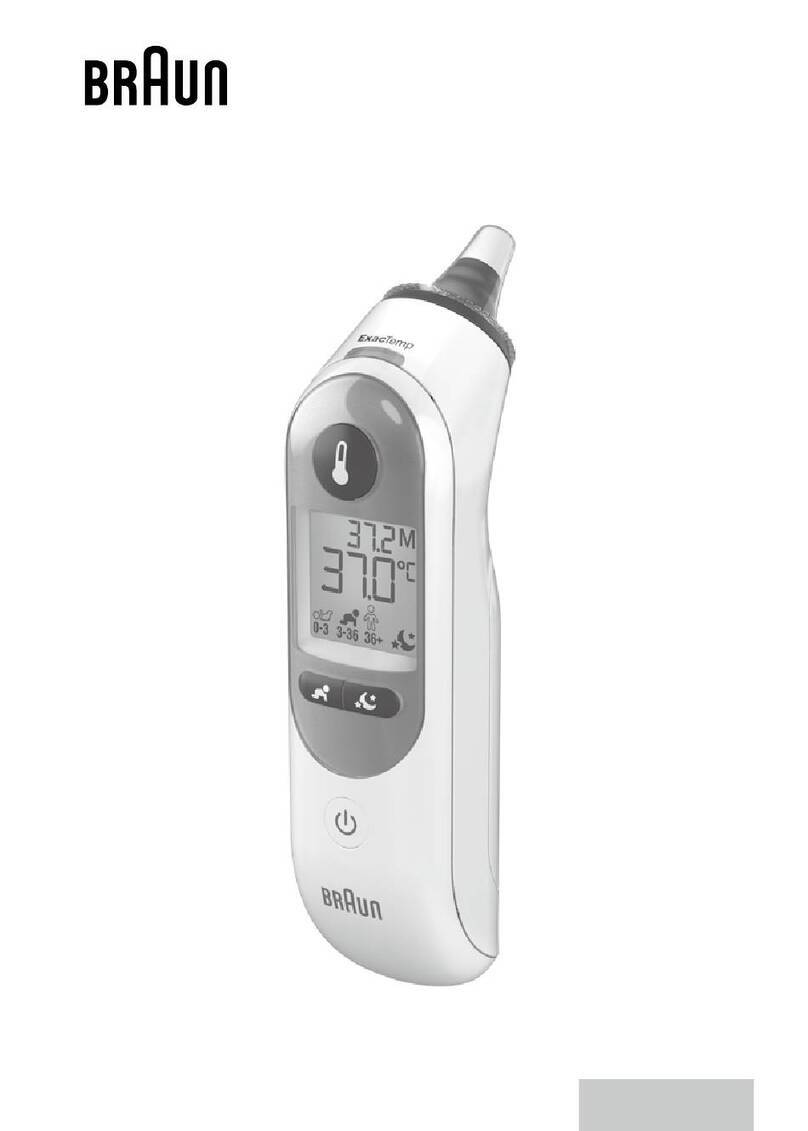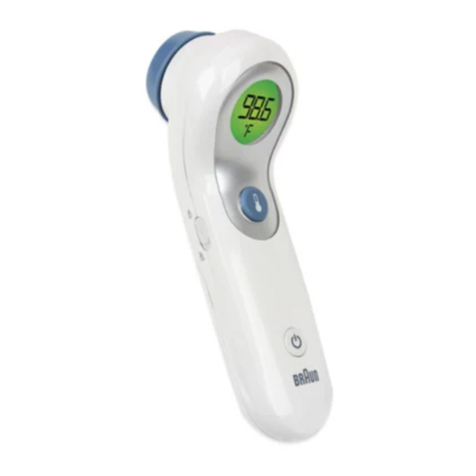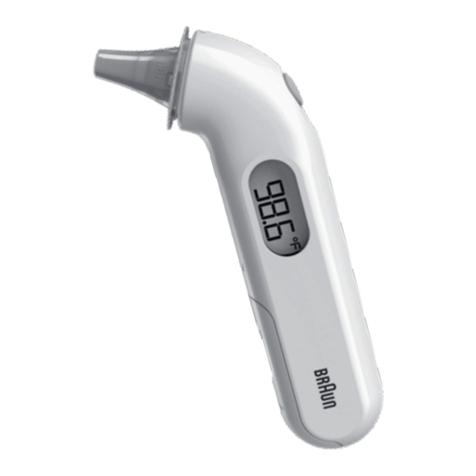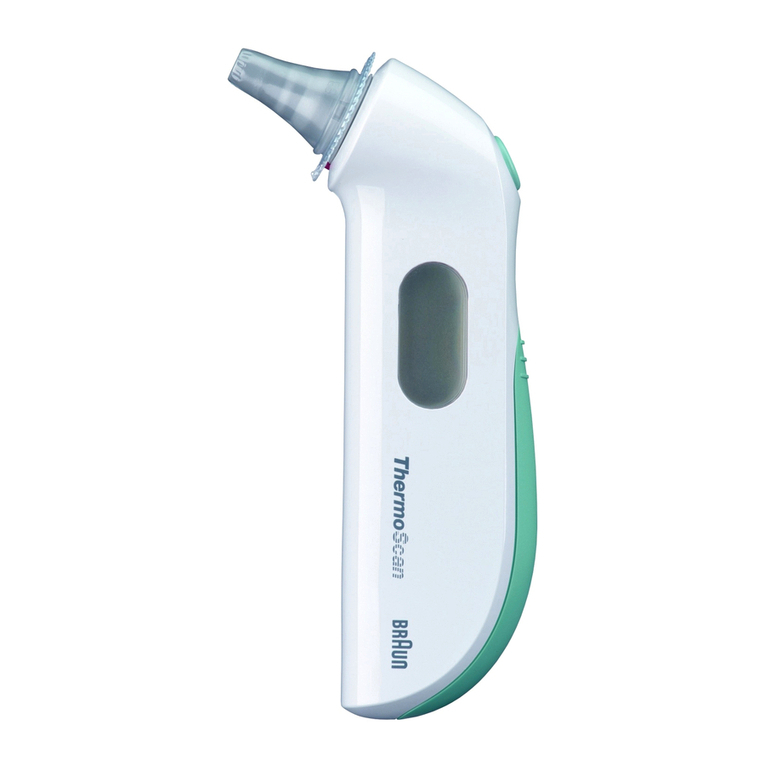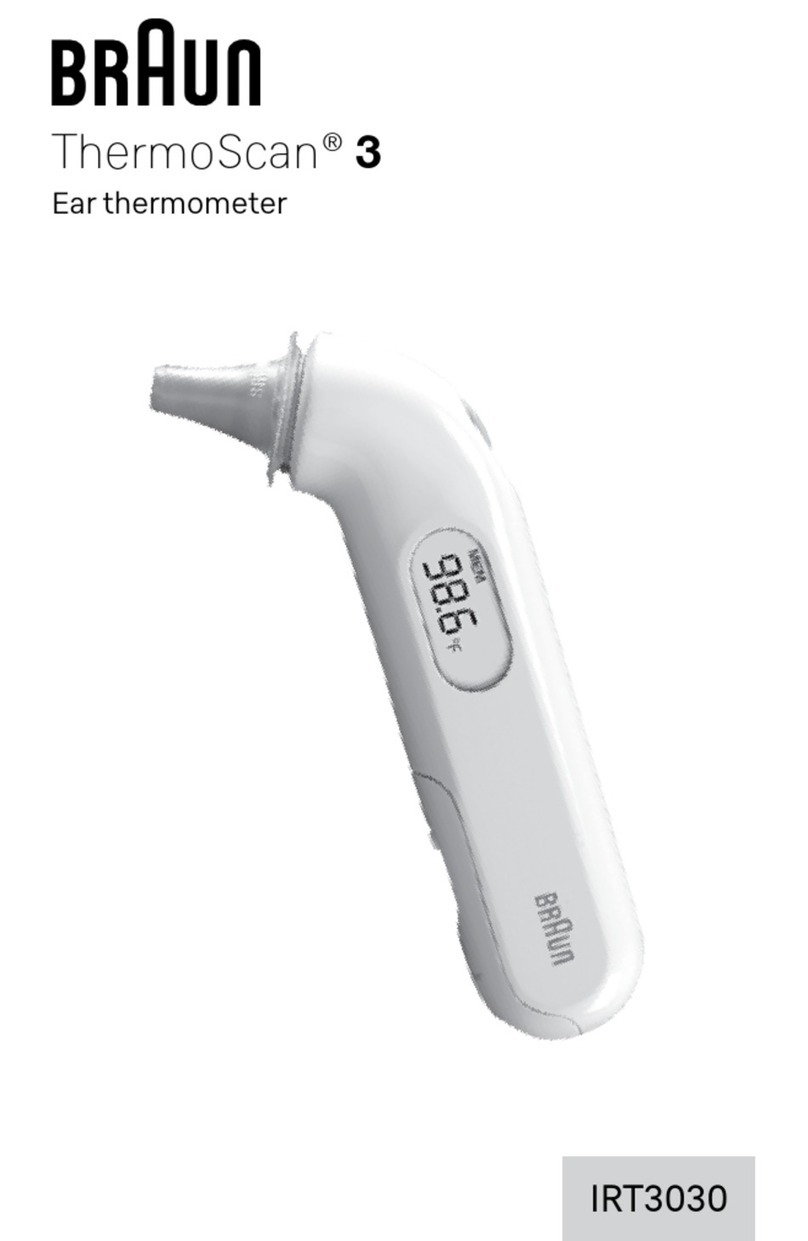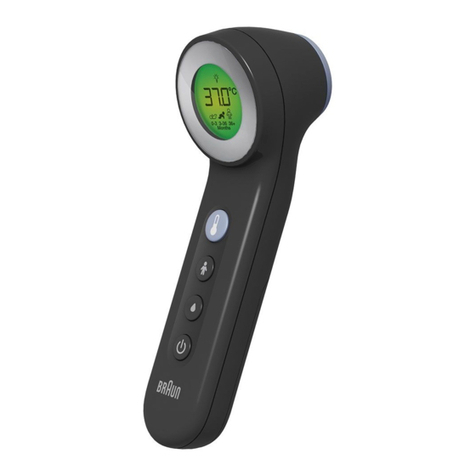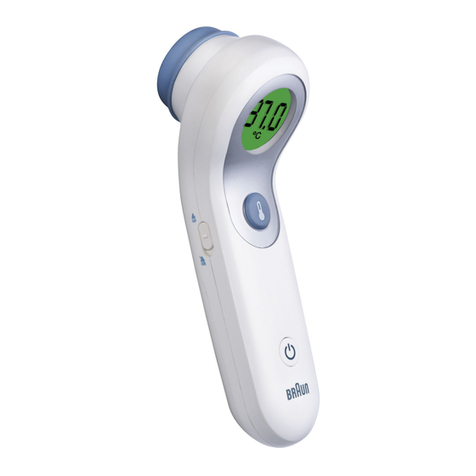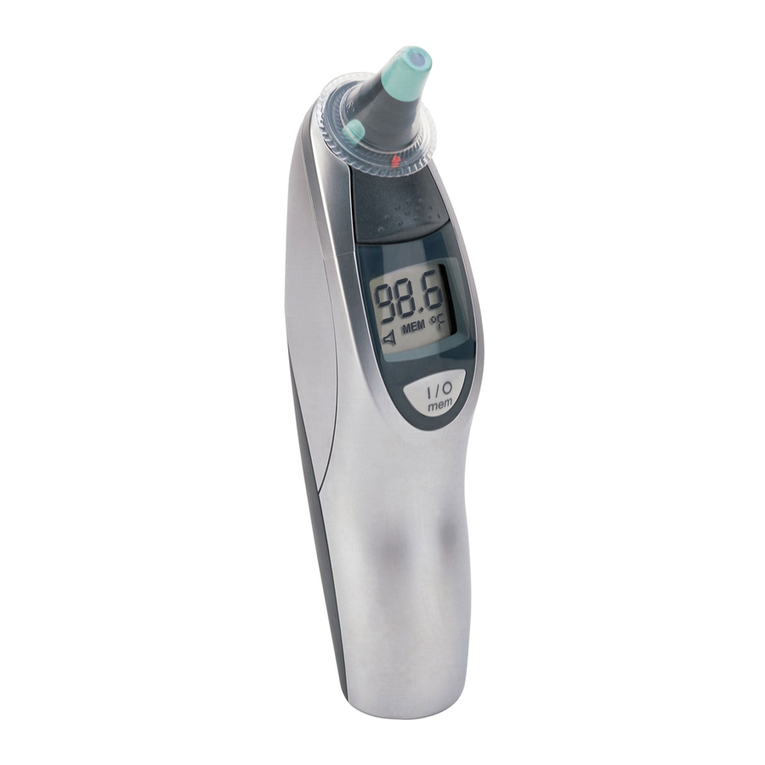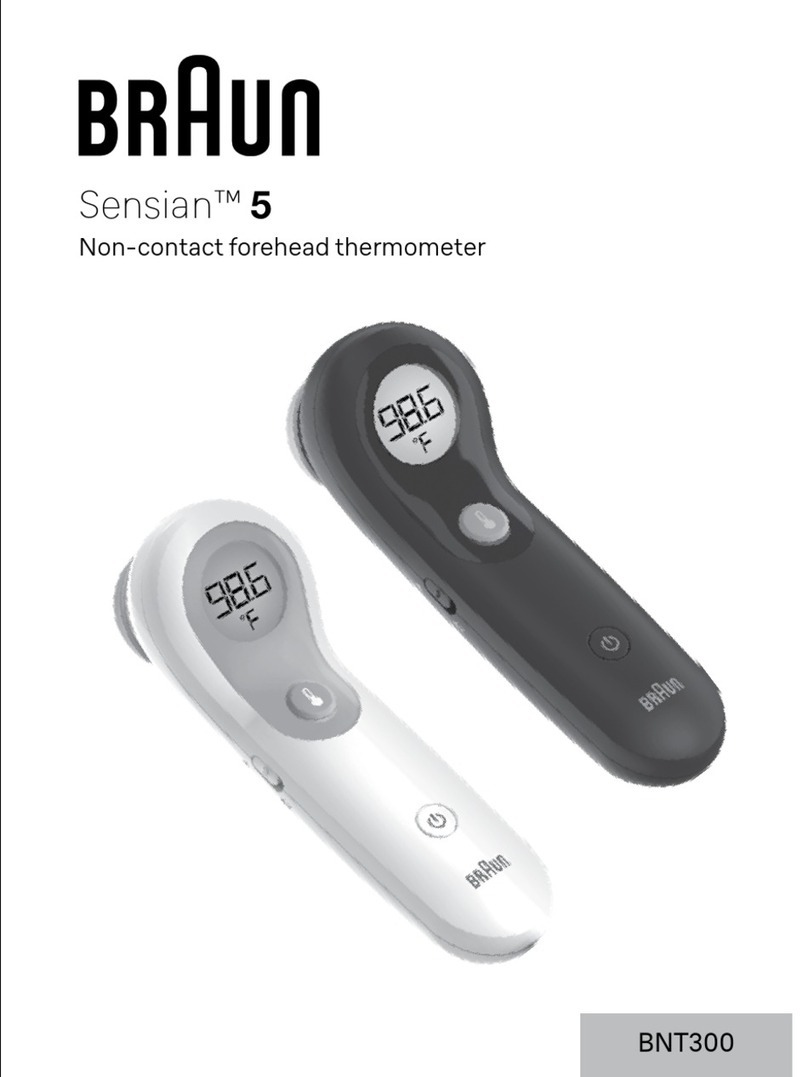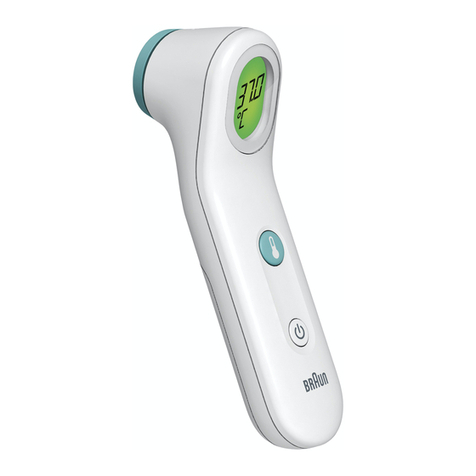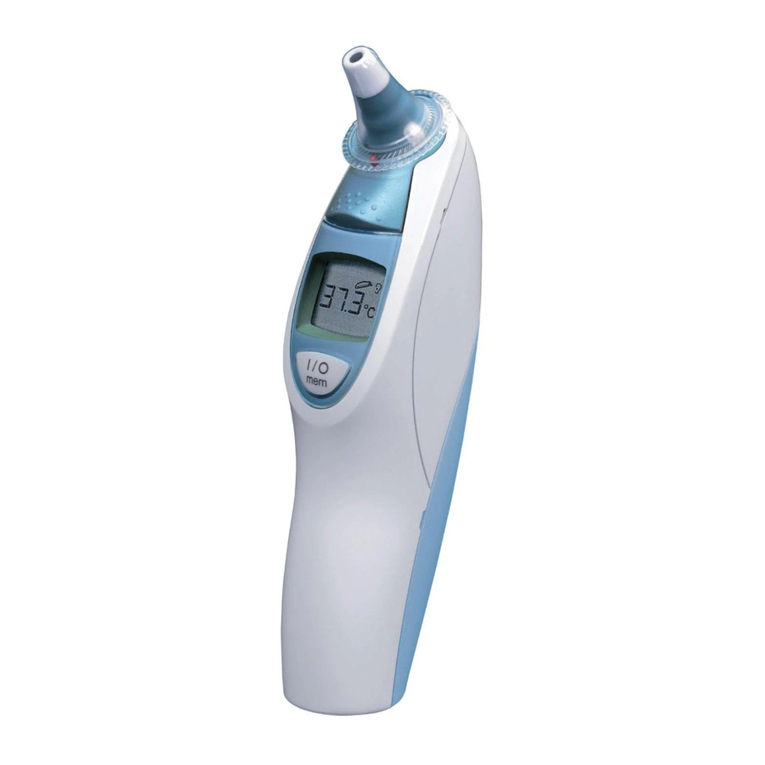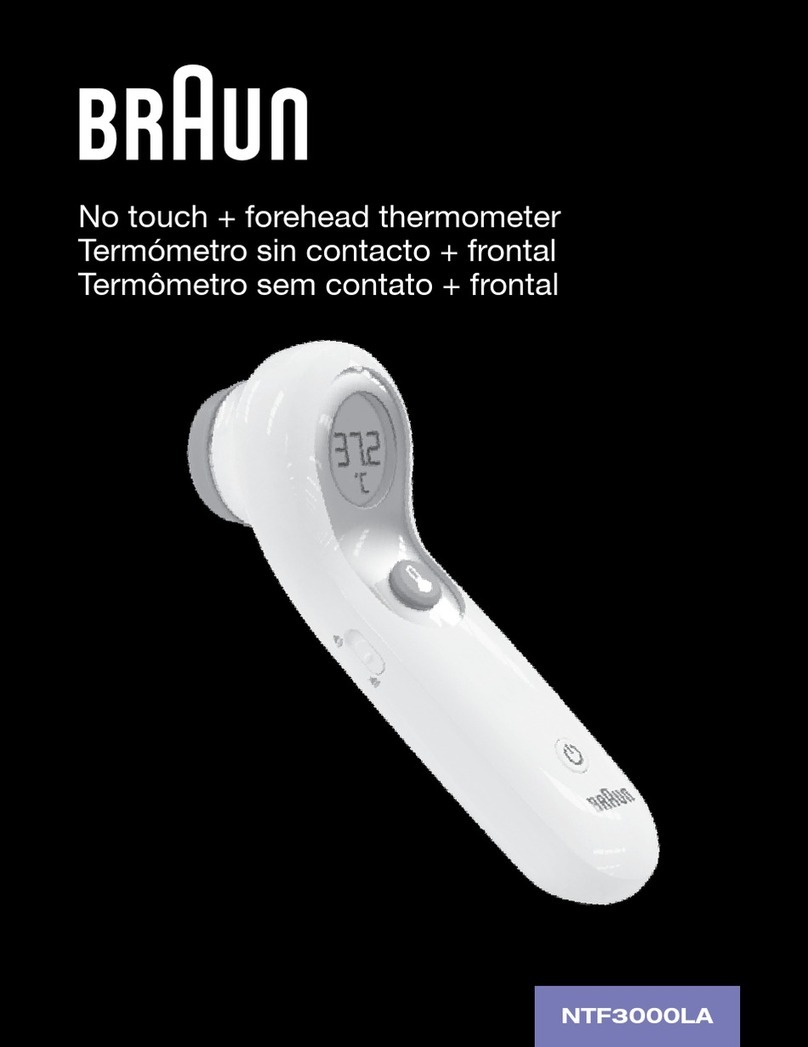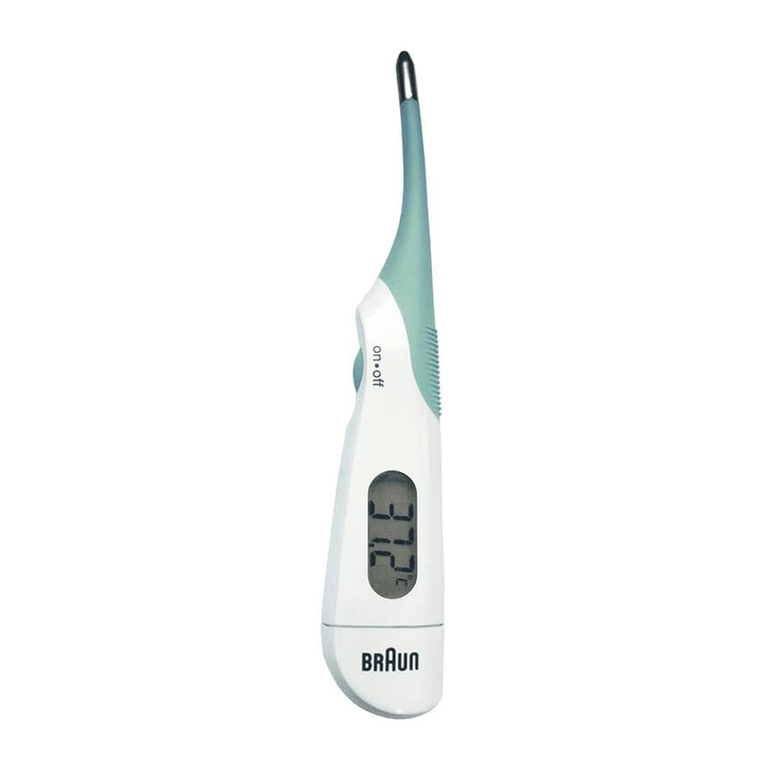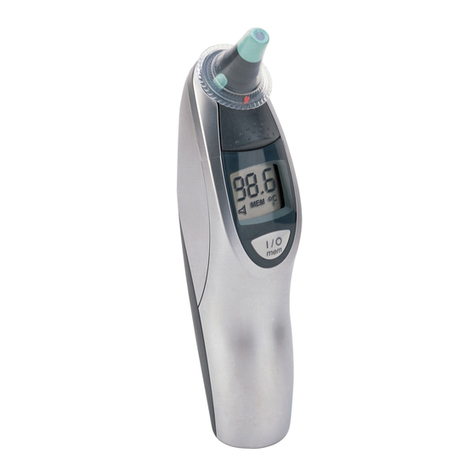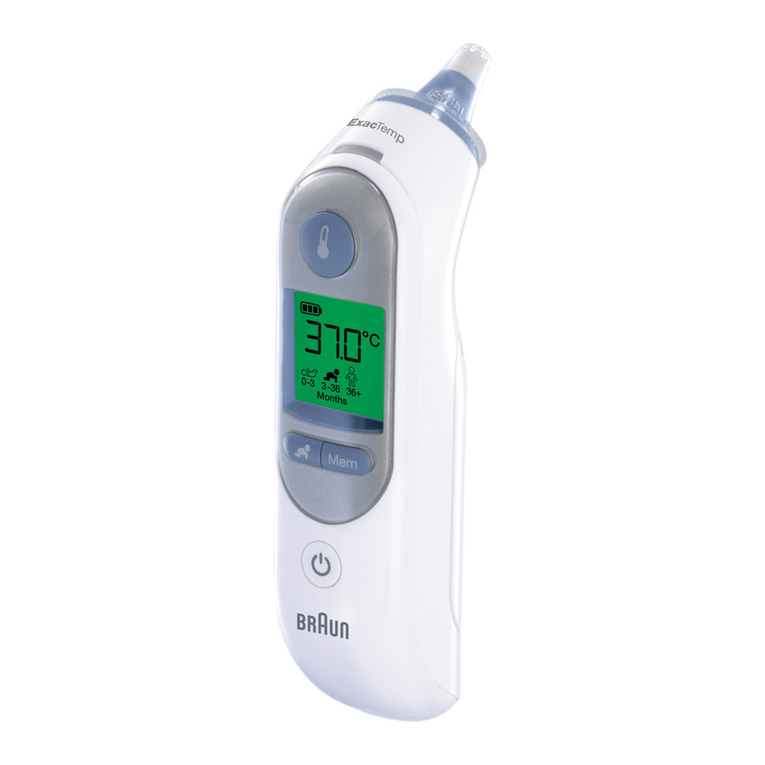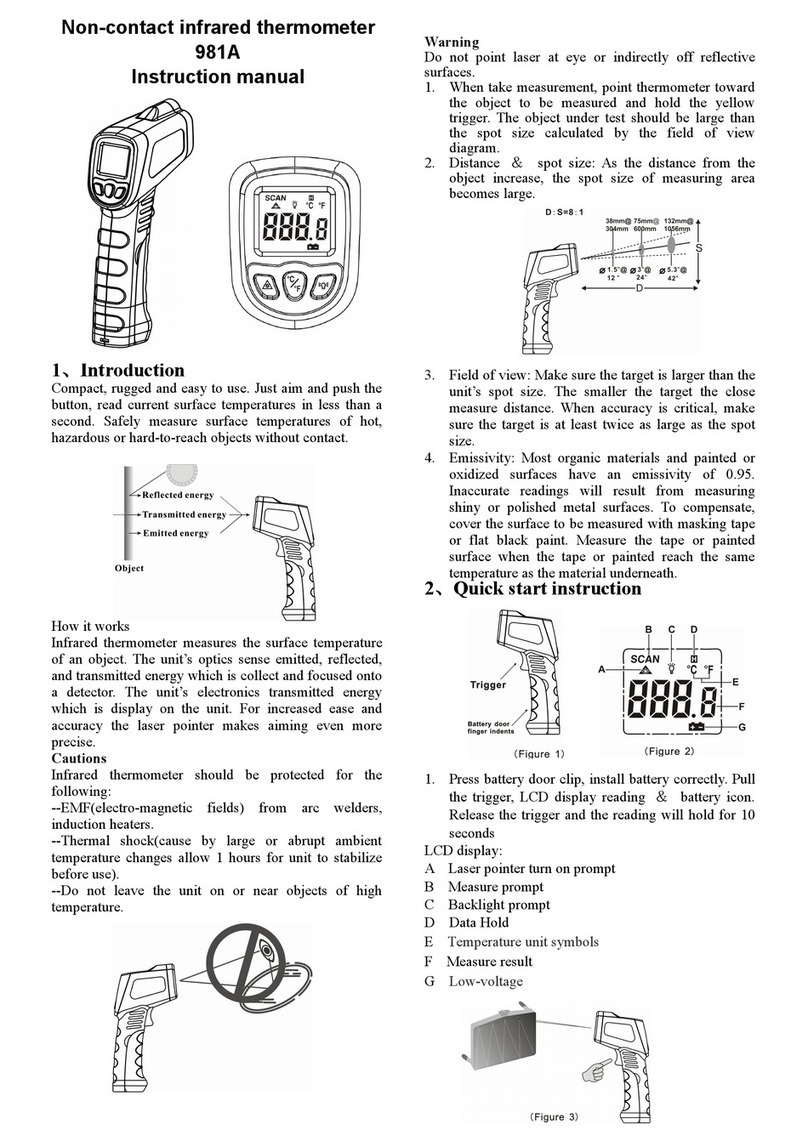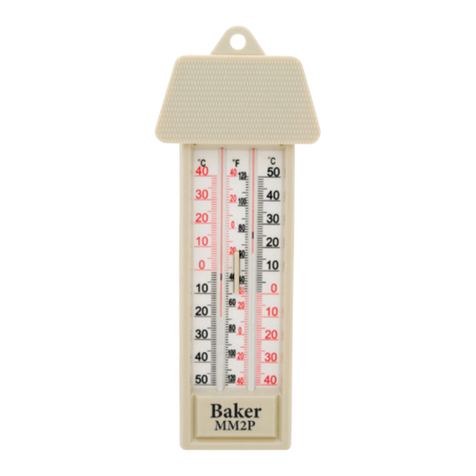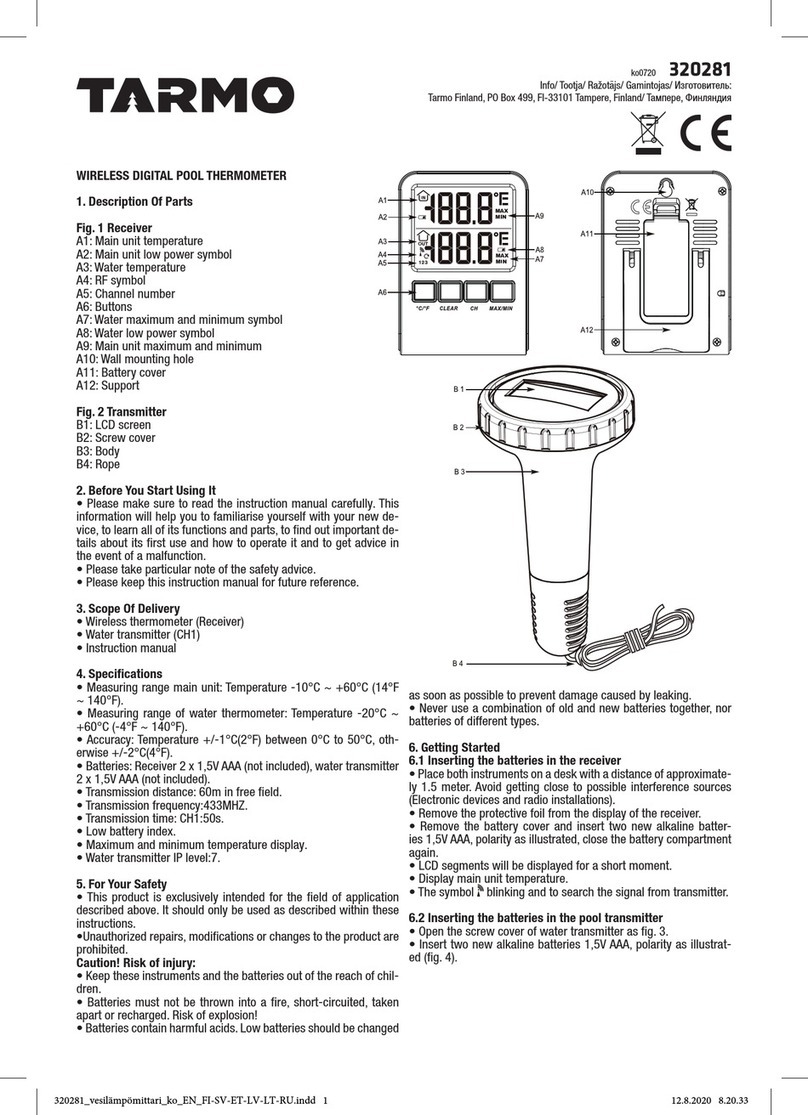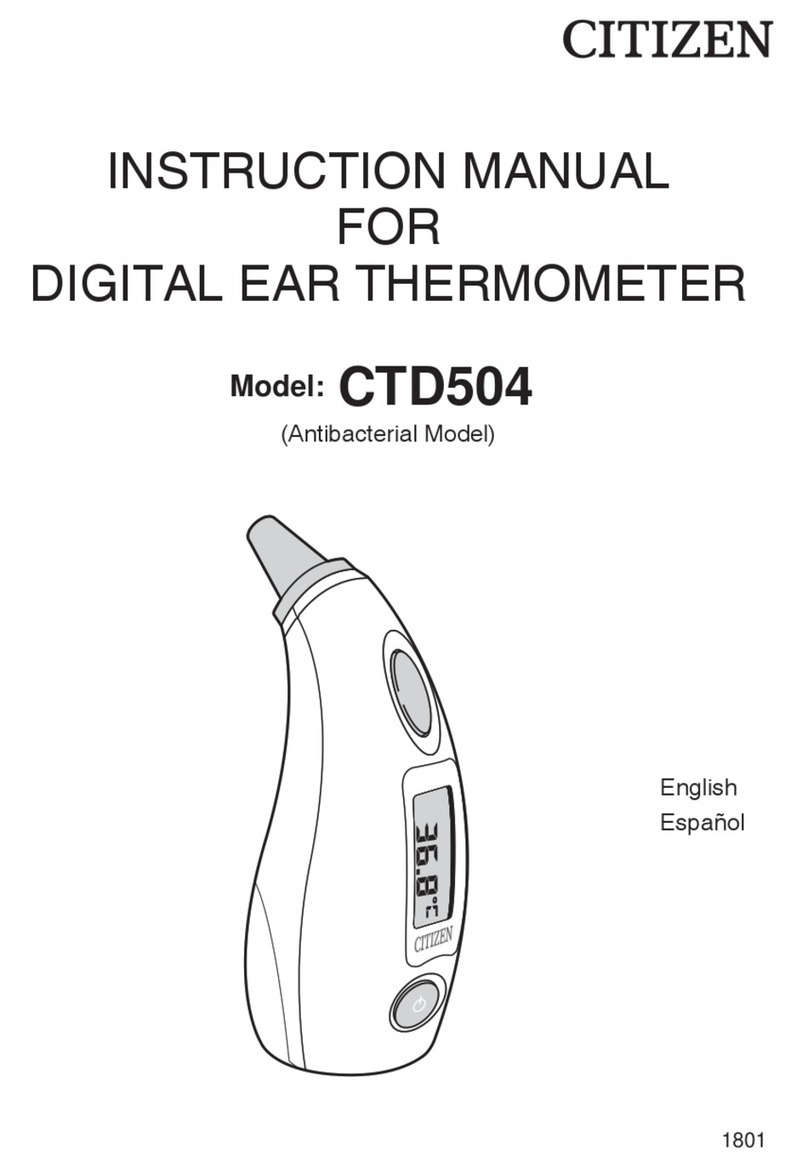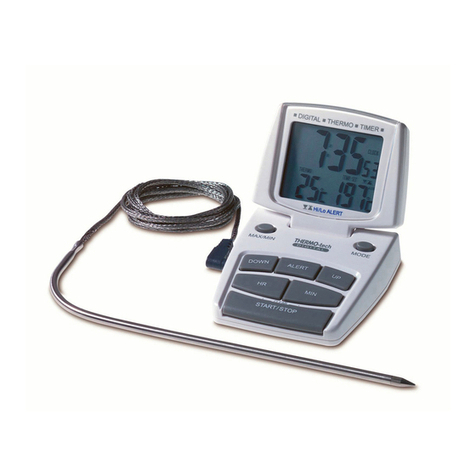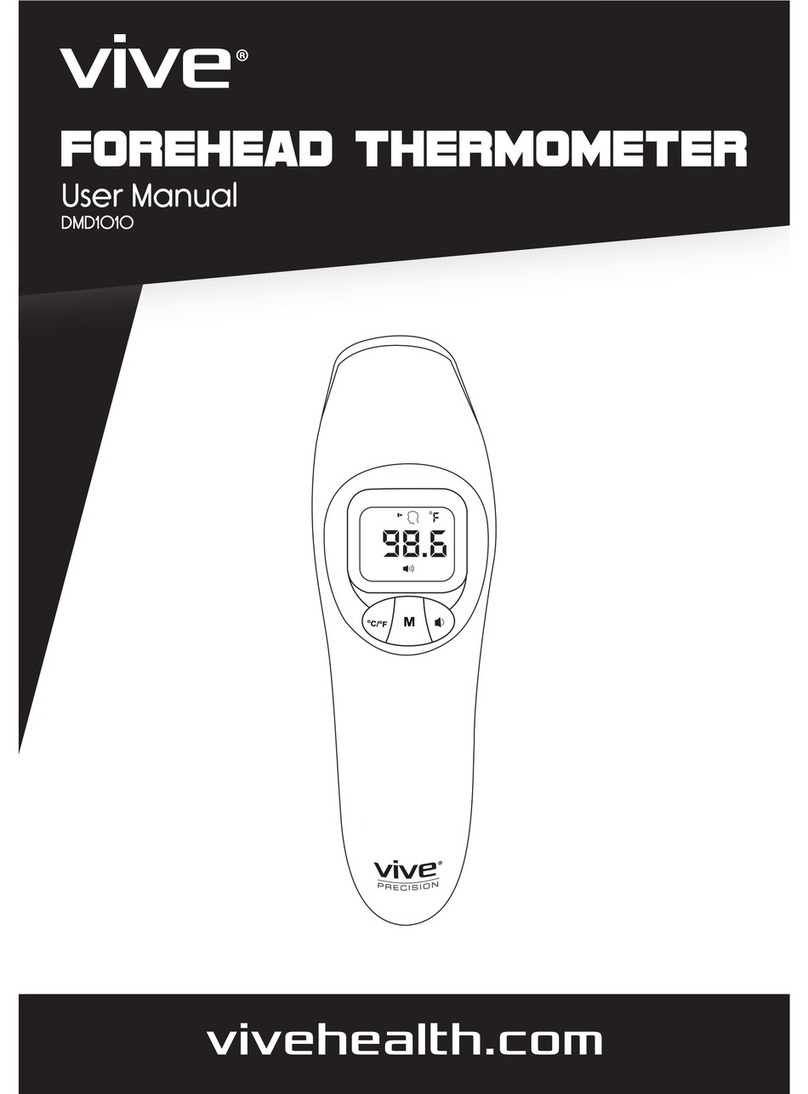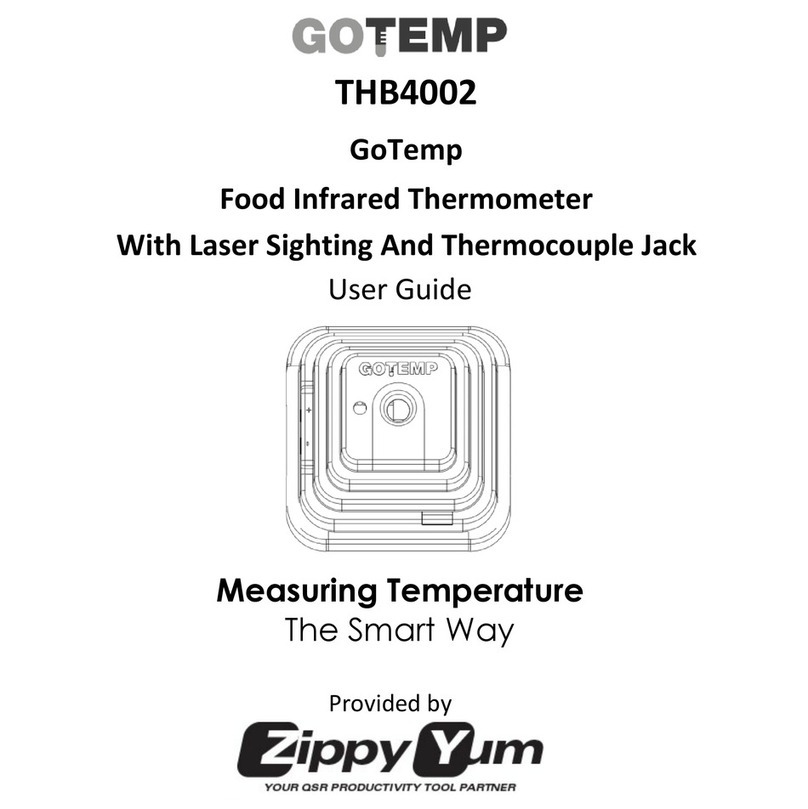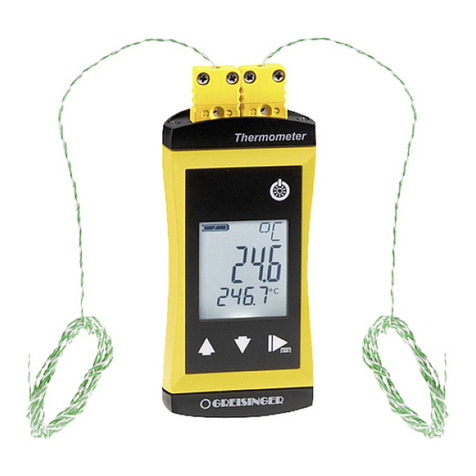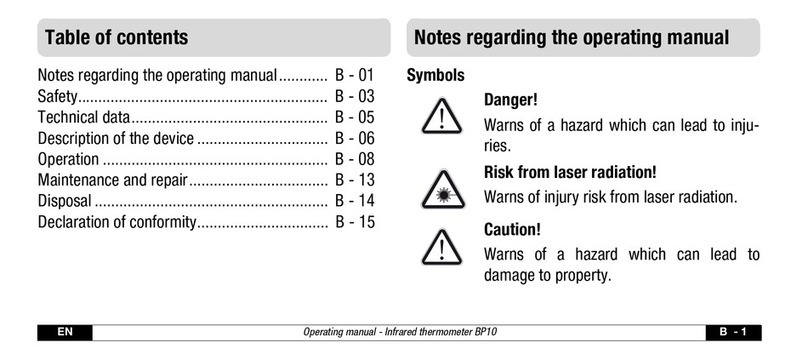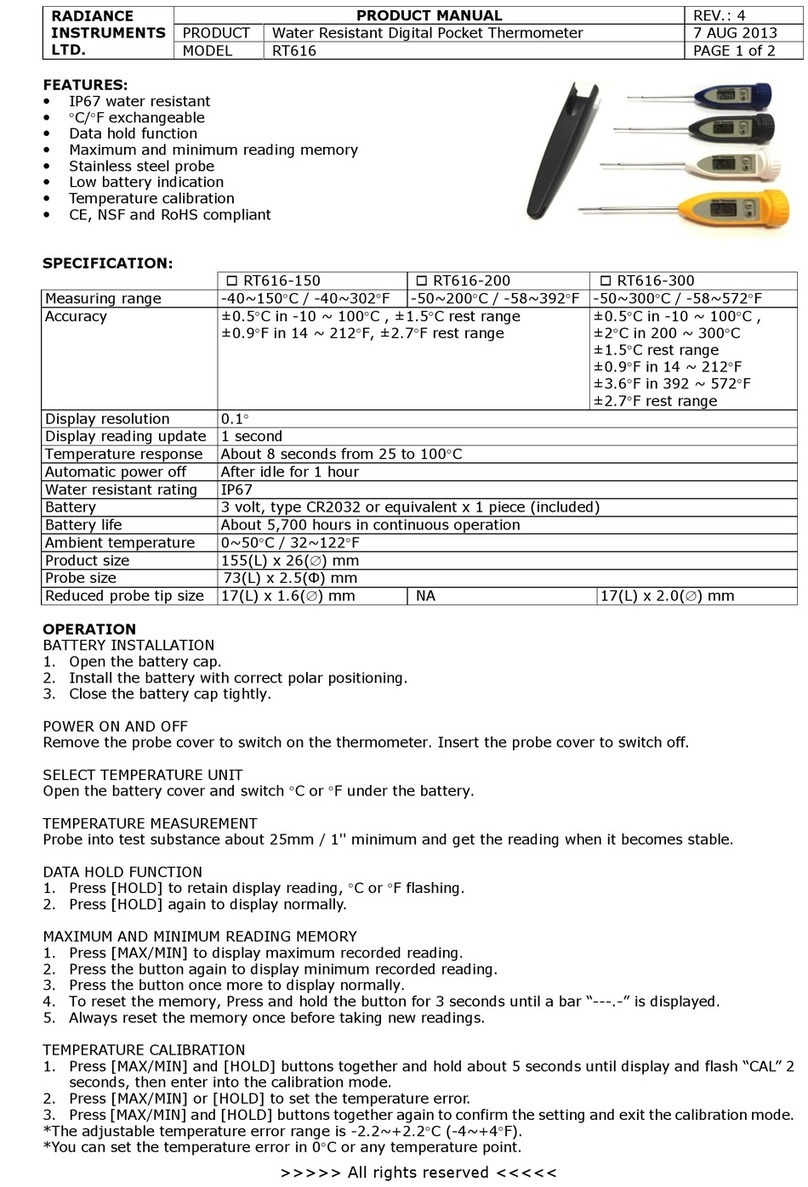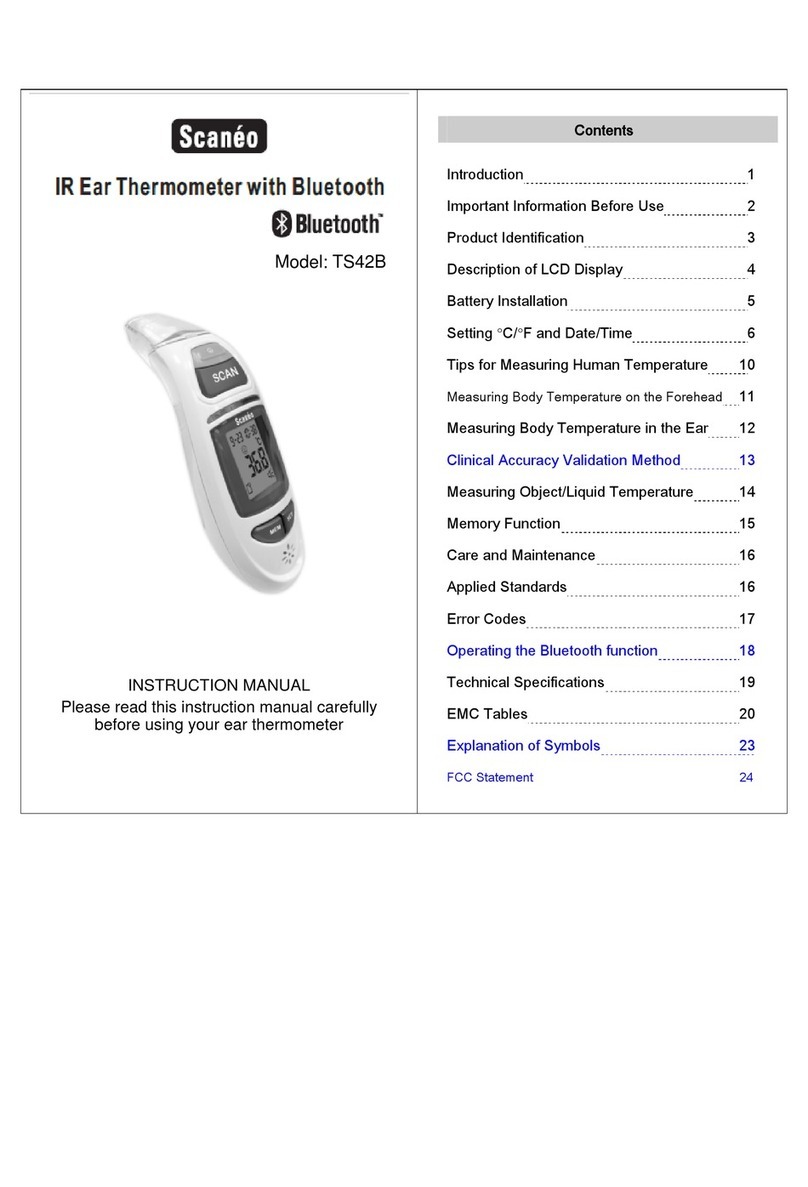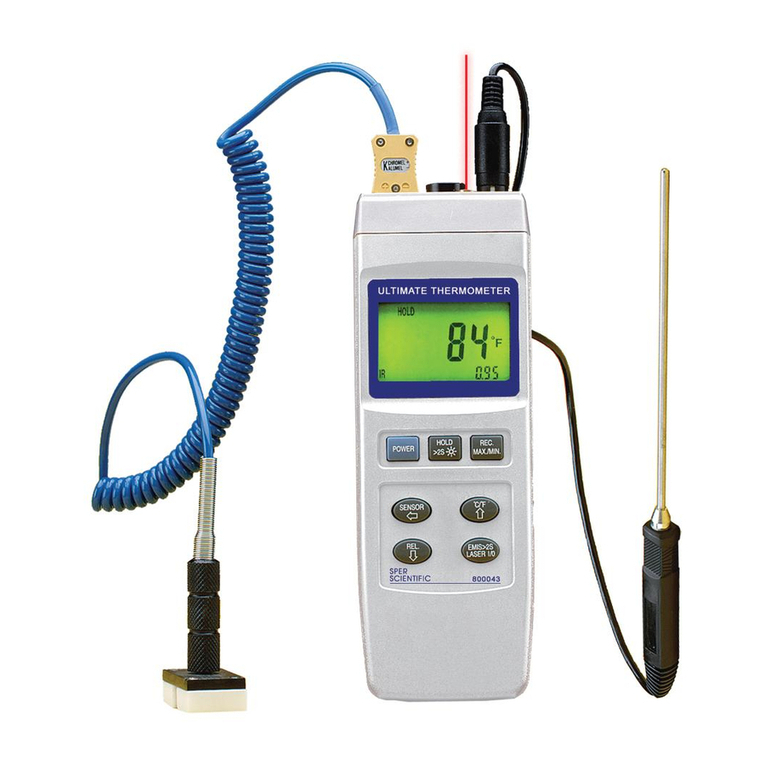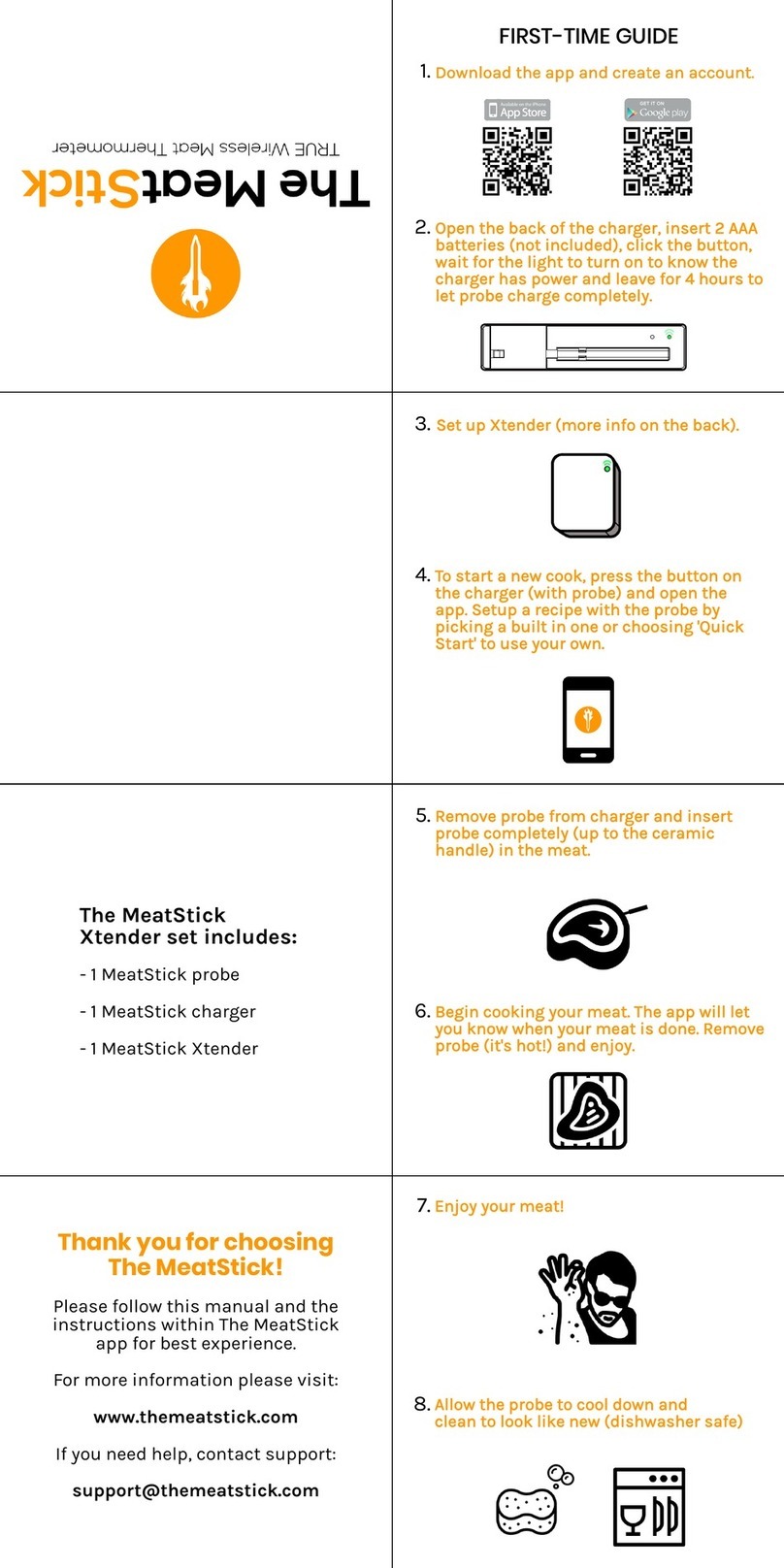
4
English
Body temperature
Normal body temperature is a range. It varies by site of measurement, and it tends to
decrease with age. It also varies from person to person and fluctuates throughout the
day. Therefore, it is important to determine normal temperature ranges. This is easily
done using Braun ThermoScan. Practice taking temperatures on yourself and healthy
family members to determine the normal temperature range.
Note: When consulting your physician, communicate that the ThermoScan temperature
is a temperature measured in the ear and if possible, note the individual’s normal
ThermoScan temperature range as additional reference.
This thermometer is intended for household use only. This product is not intended to diagnose any
disease, but is a useful screening tool for temperature. Use of this thermometer is not intended as
a substitute for consultation with your physician.
The AgeSmart feature is not intended for pre-term babies or small-for-gestational age
babies. The AgeSmart feature is not intended to interpret hypothermic temperatures. Do not allow
children to take their temperatures unattended.
Do not modify this equipment without authorization of the manufacturer.
Parents/guardians should call the pediatrician upon noticing any unusual sign(s) or symptom(s).
For example, a child who exhibits irritability, vomiting, diarrhea, dehydration, seizure, changes in
appetite or activity, even in the absence of fever, or who exhibits a low temperature, may still need
to receive medical attention.
Children who are on antibiotics, analgesics, or antipyretics should not be assessed solely on
temperature readings to determine the severity of their illness.
Temperature elevation as indicated by AgeSmart may signal a serious illness, especially in
adults who are old, frail, have a weakened immune system, or neonates and infants. Please
seek professional advice immediately when there is a temperature elevation and if you are taking
temperature on:
• Neonates and infants under 3 months (consult your physician immediately if the temperature
exceeds 37.4 °C or 99.4 °F)
• Patients over 60 years of age
• Patients having diabetes mellitus or a weakened immune system (e.g. HIV positive, cancer
chemotherapy, chronic steroid treatment, splenectomy)
• Patients who are bedridden (e.g. nursing home patient, stroke, chronic illness, recovering from
surgery)
• A transplant patient (e.g. liver, heart, lung, kidney)
Fever may be blunted or even absent in elderly patients.
This thermometer contains small parts that can be swallowed or produce a choking hazard to
children. Always keep the thermometer out of children’s reach.
AgeSmart color-coded display
Clinical research shows the definition of fever changes as newborns grow into infants, infants grow
into children and children grow into adults1.
Braun’s AgeSmart color-coded display takes the guess work out of interpreting temperature for the
entire family.
Simply use the AgeSmart button to select the appropriate age setting, take a temperature and the
color-coded display will glow green, yellow, or red to help you understand the temperature reading.
A green screen suggests no fever, a yellow screen suggests moderate fever, and red signals
high fever.
1. Herzog L, Phillips S. Addressing Concerns About Fever. Clinical Pediatrics. 2011; 50(#5): 383-390.
